Marine Life Facts National Geographic 10 Fascinating About
Hey there, friend! Did you know that the ocean is home to a fascinating world of marine life? From colorful fish to massive whales, the diversity of creatures that inhabit our oceans is truly incredible. Let's dive deeper into this amazing topic and explore some interesting facts and information about marine life!
The Gulf of Mexico: Layers of Life
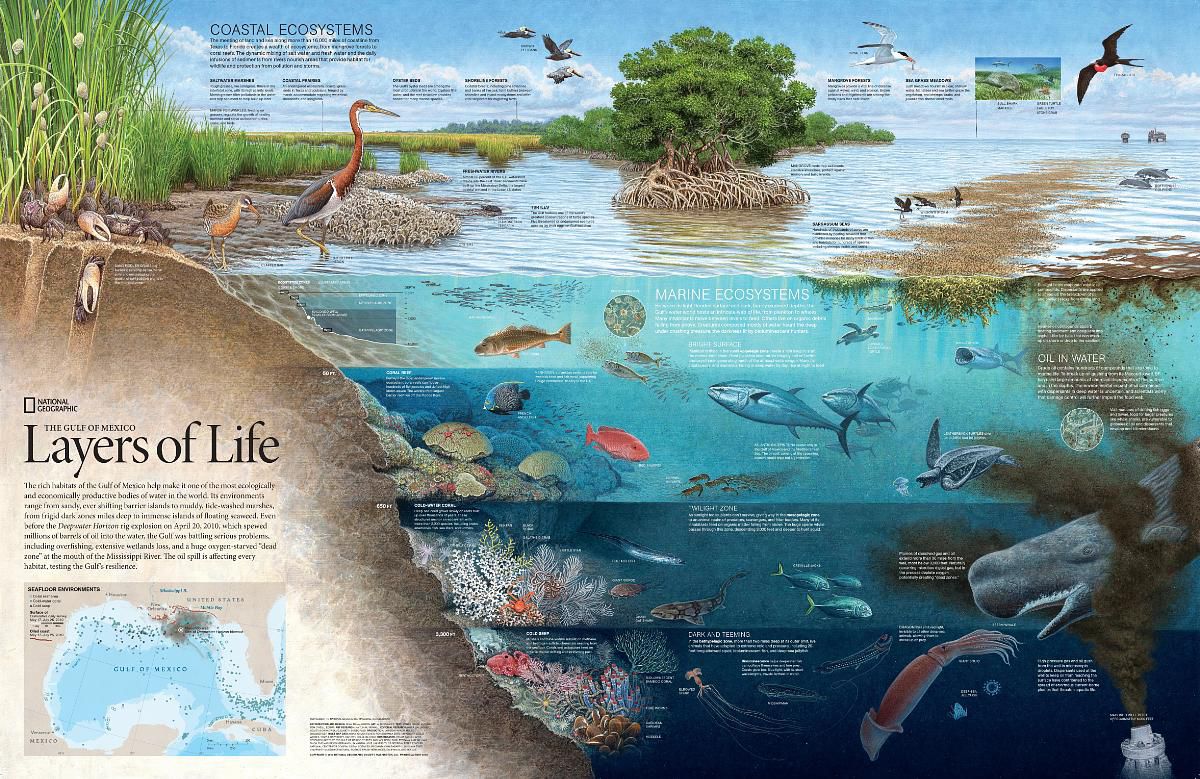
One of the most awe-inspiring aspects of marine life is the intricate balance of ecosystems that exist beneath the surface of the water. The Gulf of Mexico is a prime example of this, as it supports a wide variety of marine organisms in different layers. From the surface to the depths, the Gulf is home to an amazing array of life forms.
Did you know that the Gulf of Mexico is home to over 15,000 species of marine life? These include colorful coral reefs, majestic sea turtles, playful dolphins, and even massive whales. Each layer of the Gulf's ecosystem plays a vital role in maintaining the delicate balance of life.
Marine Life Facts - 2nd Grade Comprehension Worksheets
Learning about marine life can be fun and educational. Comprehension worksheets are a great way for 2nd graders to explore facts about marine life in an interactive manner. By engaging with these worksheets, kids can learn about different marine creatures, their habitats, and various fascinating aspects of their lives.
These worksheets provide a platform for children to develop their reading, writing, and critical thinking skills while discovering interesting information about marine life. It's a fantastic way to inspire a love for marine biology and spark curiosity about the wonders of the ocean!
Facts About the Ocean As a Marine Life Habitat

The ocean serves as a habitat for countless marine species, offering them a place to live, find food, and reproduce. It's a vast expanse of water that covers more than 70% of our planet's surface and is home to a mind-boggling array of life forms.
Did you know that the ocean is so deep that some parts have never been explored by humans? It is estimated that more than 80% of the ocean remains uncharted! With such vast and mysterious depths, there is no doubt that there are still many incredible discoveries waiting to be made.
From microscopic plankton to giant blue whales, the ocean provides a rich and diverse habitat for marine life. These creatures have adapted to survive in various conditions, from freezing waters of the Arctic to the warm tropical seas. The ocean's currents, temperature, and food availability all play a role in shaping the distribution and behavior of marine species.
10 Fascinating Facts About Marine Life
Prepare to be amazed by some mind-blowing facts about marine life that you probably didn't know before!
- Did you know that jellyfish have been around for more than 500 million years, making them one of the oldest living creatures on Earth? They have survived multiple mass extinctions and continue to thrive in our oceans today.
- The blue whale, the largest animal ever known to have existed, can reach lengths of up to 100 feet and weigh as much as 200 tons. To put that into perspective, a blue whale's heart alone is about the size of a small car!
- Some types of fish, like the clownfish, are born males and then change into females as they mature. This process is called protandry and is quite an extraordinary phenomenon!
- Marine organisms, such as corals, play a crucial role in the production of oxygen on Earth. They contribute to the oxygen cycle by photosynthesizing and releasing oxygen into the water.
- While most fish lay eggs, some species give birth to live young. These viviparous fish, such as guppies and seahorses, have internal fertilization and nurture their eggs until they hatch.
- The Great Barrier Reef, located off the coast of Australia, is the largest living structure on Earth. Stretching for over 1,400 miles, this incredible coral reef system is visible from space!
- Orcas, or killer whales, are actually part of the dolphin family. They are known for their intelligence, ability to communicate, and complex social structures within their pods.
- Mantis shrimps have one of the most powerful punches in the animal kingdom. They can strike their prey with the speed of a bullet, reaching accelerations of over 50 miles per hour!
- Sponges, despite their simple appearance, are classified as animals. They are filter feeders that play an important role in nutrient recycling within marine ecosystems.
- Some fish can change their colors and patterns to blend in with their surroundings. This remarkable ability, known as camouflage, helps them hide from predators or ambush their own prey.
Isn't marine life just incredible? These facts only scratch the surface of the wonders that await beneath the ocean's surface. Let's keep exploring!
Works Cited "Flying Fish, Flying Fish Pictures, Flying Fish Facts"

Flying fish are a fascinating species that have captured the attention and curiosity of humans for centuries. They have the remarkable ability to glide through the air, allowing them to escape predators and travel long distances.
Did you know that flying fish can reach speeds of up to 37 miles per hour? Some species can glide for hundreds of feet, using their specially adapted fins as wings. It's truly a sight to behold!
These unique creatures are found in oceans all around the world. They have large, wing-like pectoral fins that allow them to catch the wind and take flight. Flying fish often travel in schools, and their aerial acrobatics are a sight to behold!
Pin by Meredith Seidl on Fun Animal Facts

Animals are incredibly fascinating, and marine life is no exception. From the tiniest seahorse to the mighty blue whale, every creature has its own unique characteristics and quirks.
Did you know that some fish can change their gender? The clownfish, famously known from the movie "Finding Nemo," is one such species. When the dominant female dies, the dominant male will undergo a sex change and take her place. Talk about a unique family dynamic!
The world of marine animals is full of surprises and incredible adaptations. Whether it's the amazing hunting techniques of the orcas or the intricate communication systems of dolphins, these creatures continue to amaze and inspire us.
15 Incredible Marine Life Facts That Will Make You Say 'WHAT?'

Prepare yourself for even more mind-boggling marine life facts that might leave you saying, "What?!"
- Sea cucumbers have the ability to eject their internal organs as a defense mechanism. These organs will regenerate within a few weeks, enabling the sea cucumber to survive.
- The anglerfish, known for its bioluminescent lure, has a unique method of reproduction. The male anglerfish fuses with the female, essentially becoming a parasite that provides sperm for the female's eggs.
- Some species of shrimp have a symbiotic relationship with a type of jellyfish called a siphonophore. The shrimp are protected by the stinging cells of the jellyfish while providing transportation and cleaning services for the jellyfish.
- Octopuses are incredibly intelligent creatures. They have been observed using tools, solving puzzles, and even opening jars to obtain food. Their problem-solving abilities have astounded researchers!
- Many deep-sea creatures rely on bioluminescence to survive in the complete darkness of the ocean depths. This ability allows them to attract prey, communicate, and even defend themselves.
- Electric eels can generate electric shocks of up to 600 volts! They use this ability to stun their prey and also to navigate in murky waters.
- The horseshoe crab, despite its name, is not a true crab. It belongs to a group of ancient arthropods that existed before the age of dinosaurs.
- The Portuguese man o' war, often mistaken for a jellyfish, is actually a colony of specialized organisms called zooids. These zooids work together to create the distinctive floating structure.
- The mantis shrimp has one of the most complex visual systems of any animal on Earth. They can see an extensive range of colors and detect polarized light, giving them a unique advantage in hunting.
- Sea turtles have been around for more than 100 million years, surviving the mass extinction that wiped out the dinosaurs. They are some of the most ancient creatures on our planet.
- Giant clams can live for over 100 years and reach sizes of up to four feet in length. They have a mutualistic relationship with tiny algae called zooxanthellae, which provide them with nutrition.
- The blue-ringed octopus might be small, but it is one of the most venomous creatures in the ocean. Its bite can cause paralysis and, in extreme cases, even death.
- Corals are not individual organisms, but rather colonies of tiny animals called polyps. These polyps secrete limestone skeletons, which build up over time to form massive coral reefs.
- Sargassum seaweed forms floating mats that provide important habitat and food sources for various marine species. It plays a vital role in the ocean's ecosystem.
- Manta rays are incredible creatures known for their graceful movements through the water. They possess the largest brains of all fish, which may contribute to their ability to navigate and communicate.
Wow, aren't these marine life facts mind-blowing? They showcase the sheer diversity and complexity of the underwater world. It's truly a testament to the wonders of nature!
20 Incredible Marine Life Facts

If you're hungry for even more amazing facts about marine life, you're in luck! Here are 20 more incredible facts that will leave you in awe:
- The blue tang fish, commonly known as Dory from the movie "Finding Nemo," can change its color and pattern within seconds. Talk about a quick makeover!
- Some fish, like the parrotfish, have the ability to produce a mucus cocoon around their bodies at night. This cocoon not only protects them from predators but also helps to mask their scent.
- The largest known coral reef system in the world is the Great Barrier Reef, measuring around 1,400 miles in length. It is a UNESCO World Heritage site and a stunning example of marine biodiversity.
- Whales are not only the largest mammals on Earth, but they also have some of the largest brains. They are highly intelligent creatures that exhibit complex behaviors and social structures.
- The ocean's saltwater is a great conductor of electricity. In fact, it is estimated that the total dissolved salt in the ocean could power a light bulb for more than 200 years!
- Sponges are not just used for cleaning and bathing. They are also a source of potentially life-saving compounds that have been used in the development of new medications.
- Sharks are often portrayed as fierce predators, but did you know that they play a crucial role in maintaining the health of marine ecosystems? As apex predators, they help to regulate the populations of other marine species.
- The humpback whale is known for its beautiful and haunting songs. These complex melodies can travel for great distances underwater and are thought to be a form of communication between whales.
- Some fish possess the ability to generate electric fields, allowing them to navigate and locate prey in dark or murky waters. This fascinating adaptation is found in electric rays, electric eels, and certain species of catfish.
- The ocean is home to the world's largest living structure – the Great Barrier Reef – but it is also home to the largest fish, the whale shark. Despite its large size, the whale shark is a gentle giant that primarily feeds on plankton.
- Sea otters are the only mammals that use tools. They often use rocks to crack open shellfish, demonstrating their remarkable problem-solving skills.
- Dolphins are highly intelligent creatures that possess a sophisticated system of communication. They use a combination of clicks, whistles, and body postures to convey information to one another.
- Seahorses are unique creatures that have a very peculiar method of reproduction. It is the male seahorse that carries the eggs and gives birth to live young!
- The ocean is home to some of the oldest living organisms on Earth. Deep-sea coral colonies can live for thousands of years, with some estimates suggesting they may even be tens of thousands of years old.
- Sea stars, commonly known as starfish, have the ability to regenerate lost limbs. If a sea star loses an arm, it can often grow it back over time.
- Migrating marine creatures, like sea turtles and salmon, possess an incredible ability to navigate across vast distances without getting lost. They use various cues, such as the Earth's magnetic field or the position of the sun and stars, to find their way.
- The ocean's waters are full of natural light shows. Bioluminescent organisms, such as fireflies or dinoflagellates, create beautiful displays of light, especially in the dark depths of the ocean.
- Not all sharks are fierce predators. The largest shark species, the whale shark, is actually a gentle filter feeder that survives on a diet of plankton and small fish.
- Many marine creatures, including whales and dolphins, are highly social animals. They live in groups called pods and rely on social interactions for communication, hunting, and protection.
- The ocean is home to an incredible diversity of species, but scientists believe that we have only discovered a fraction of the marine life that exists. Many underwater areas remain unexplored, holding the potential for new and exciting discoveries! If you are looking for Fabulous facts poster series: Auckland educational resources you've came to the right web. We have 30 Images about Fabulous facts poster series: Auckland educational resources like Ocean Facts, Marine life, save the oceans, fun cacts | Fun facts, Ocean, Briefbox — Marine Life Infographic by Andre Horton and also 5 Amazing Facts About National Geographic - D23. Here you go:
Fabulous Facts Poster Series: Auckland Educational Resources
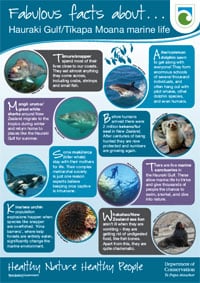 www.doc.govt.nz
www.doc.govt.nz poster marine fabulous facts auckland species 423k a2 pdf
Pin By Lowrey Barrow On Wish List | Ocean Books, Educational Books, Fun
 www.pinterest.com
www.pinterest.com 10 Fascinating Facts About Marine Life - Listverse
marine facts listverse
Ocean Animals Facts: 10 Amazing Things About Marine Life
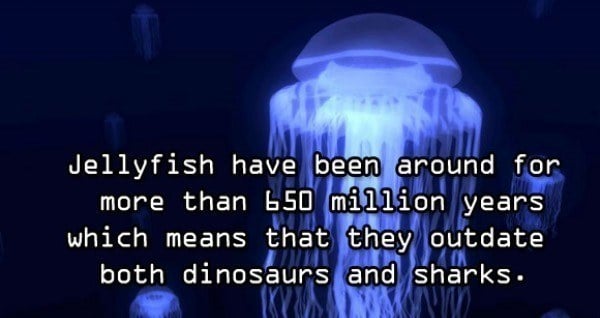 allthatsinteresting.com
allthatsinteresting.com facts ocean animals amazing jellyfish interesting animal sea creatures ten marine fact things weird fun biology cool science fish creature
30 Fun Facts About Marine Life - Diving Liveaboard In Thailand And Myanmar
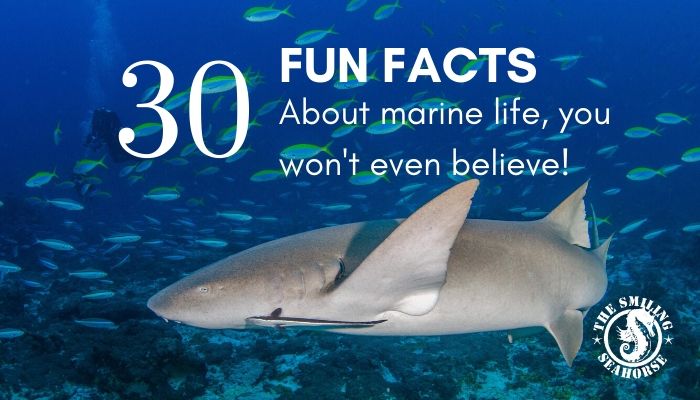 www.thesmilingseahorse.com
www.thesmilingseahorse.com marine angelfish mate
Pin By Money&Dream Life | Animals&Nat On Animal Facts&Info | Marine
 www.pinterest.com
www.pinterest.com facts manatee manatees fewer canals lecameleonhotel
Briefbox — Marine Life Infographic By Andre Horton
 briefbox.me
briefbox.me briefbox oceans
The Gulf Of Mexico: Layers Of Life - National Geographic Society
 www.nationalgeographic.org
www.nationalgeographic.org layers gulf mexico sea ecosystem geographic national marine oil spill ecosystems map coastal puzzle resources nationalgeographic snot seafloor sees science
Amazing Facts About Australian Marine Life (Steve Parish Discov... By
 www.ebay.com
www.ebay.com parish steve australian
How Old Do Fish Get? Today’s Smarter Every Day Infrographic Helps
 www.pinterest.com
www.pinterest.com ocean reefs smartereveryday smarter biologist spans saltwater whales asapscience gbr lifespans infrographic helps zoology career lifespan marinelife scuba ilovecharts colossal
Learn About The Pristine Seas Expeditions From National Geographic
 www.pinterest.com
www.pinterest.com geographic pristine ecosystem nationalgeographic
Ocean Animals Facts: 10 Amazing Things About Marine Life
 allthatsinteresting.com
allthatsinteresting.com facts animals ocean amazing marine things allthatsinteresting
Pin By Johnny Rook On Marine Life. In 2020 | Animal Facts, Fun Facts
 www.pinterest.com
www.pinterest.com Ocean Animals Facts: 10 Amazing Things About Marine Life
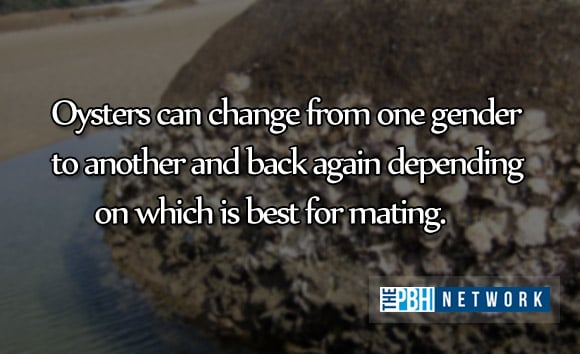 allthatsinteresting.com
allthatsinteresting.com oceans
Ocean Facts, Marine Life, Save The Oceans, Fun Cacts | Fun Facts, Ocean
 www.pinterest.com
www.pinterest.com facts marine ocean oceans fun choose board
15 Incredible Marine Life Facts That Will Make You Say 'WHAT?' - YouTube
 www.youtube.com
www.youtube.com 10 Fun Facts About Marine Life | Less Known Facts
 lessknownfacts.com
lessknownfacts.com facts marine fun
Pinterest • The World’s Catalog Of Ideas
 www.pinterest.com
www.pinterest.com ocean facts sea fun animal animals kids marine creatures infographic beach under amazing activities jellyfish theme infographics board grade science
Pin By Meredith Seidl On Fun Animal Facts | Fun Facts About Animals
 www.pinterest.com
www.pinterest.com Pin By Money&Dream Life | Animals&Nat On Animal Facts&Info | Marine
 www.pinterest.com
www.pinterest.com marine jellyfish ocean animal facts infographic infographics biology animals sea beach ly visual fish info information krebs cycle gelatinous consisting
Celebrating Our Oceans: Fun Facts About Marine Life
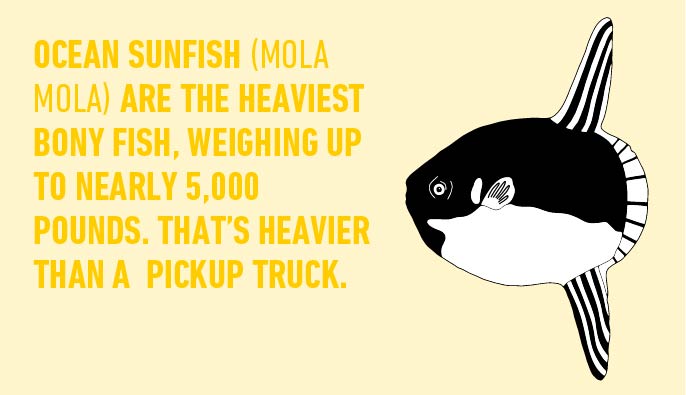 www.expeditions.com
www.expeditions.com marine facts oceans celebrating fun seem gigantic underwater otherworldly sunfish species ocean some
Pin By Melanie Haines On Scuba And Shark Stuff | Ocean Information
 www.pinterest.com
www.pinterest.com oceans facts marine conservation infographic ocean common biology sea information great some deep resources areas national fishing fisheries management headline
Marine Life Facts - 2nd Grade Comprehension Worksheets | Education.com
facts marine education
Facts About The Ocean As A Marine Life Habitat - Interesting - 2020
 rw.leskanaris.com
rw.leskanaris.com marine facts ocean information habitat habitats
20 Incredible Marine Life Facts - More Fun Diving
 morefundiving.com
morefundiving.com marine facts incredible diving reef coral fun destinations male which becomes except largest female
Pin By Hugh Smith On Marine Life | National Geographic Society, Oceans
 www.pinterest.com
www.pinterest.com memolition weird
Works Cited "Flying Fish, Flying Fish Pictures, Flying Fish Facts
 www.pinterest.com
www.pinterest.com Marine Life Facts: Part 1
marine facts part education
Infographic: Amazing Facts About Creatures Of The Ocean - MaritimeCyprus
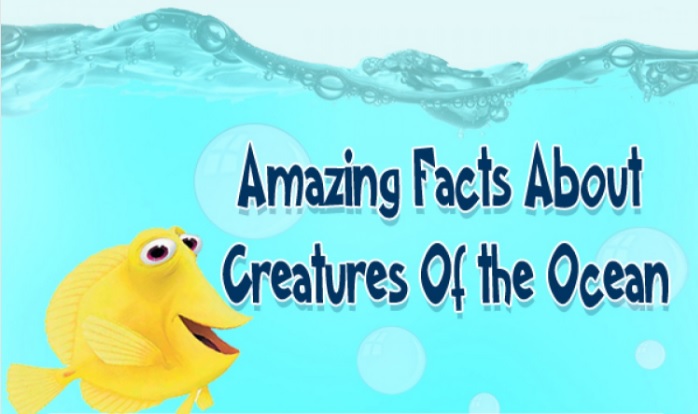 maritimecyprus.com
maritimecyprus.com facts ocean creatures amazing infographic maritimecyprus
5 Amazing Facts About National Geographic - D23
 d23.com
d23.com d23
Marine facts listverse. Marine life facts. 15 incredible marine life facts that will make you say 'what?'
Post a Comment for "Marine Life Facts National Geographic 10 Fascinating About"